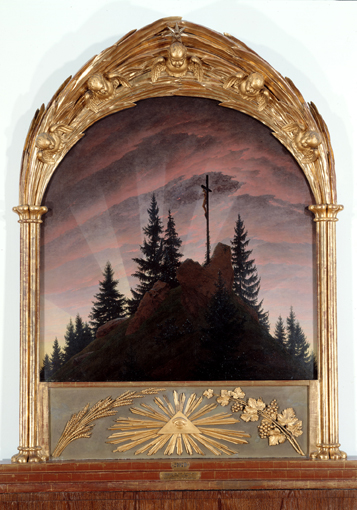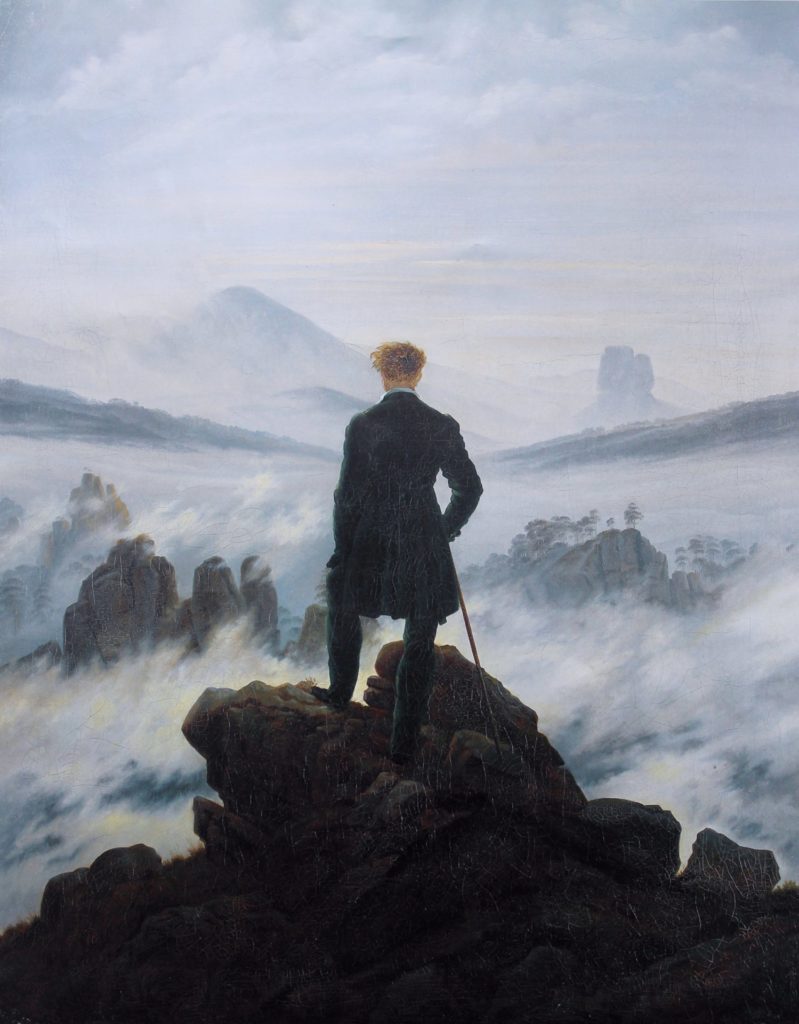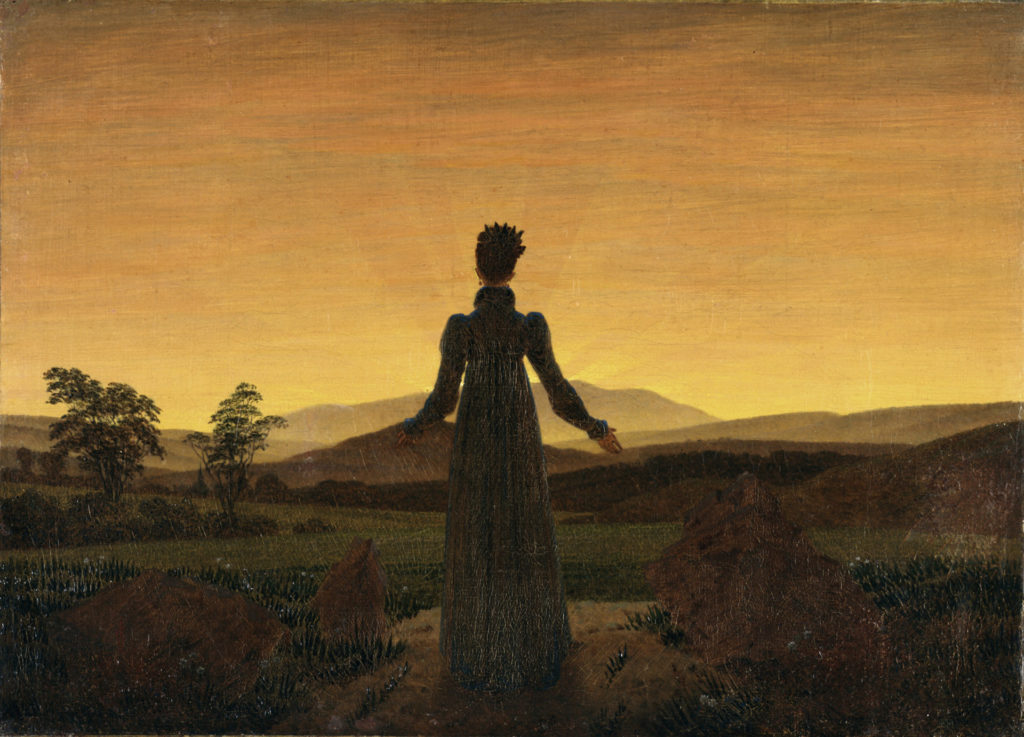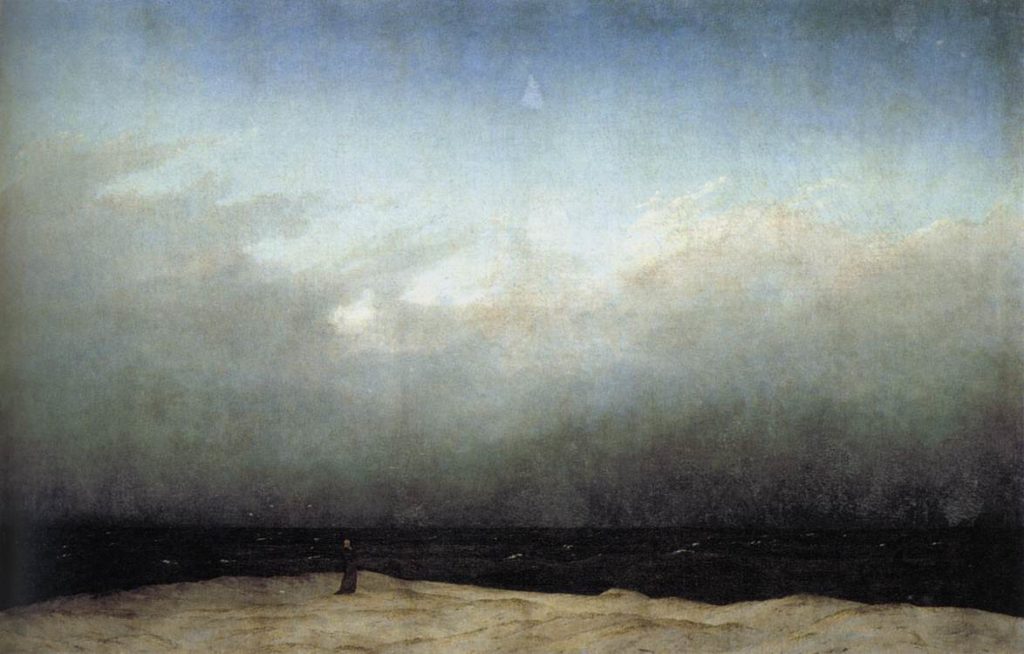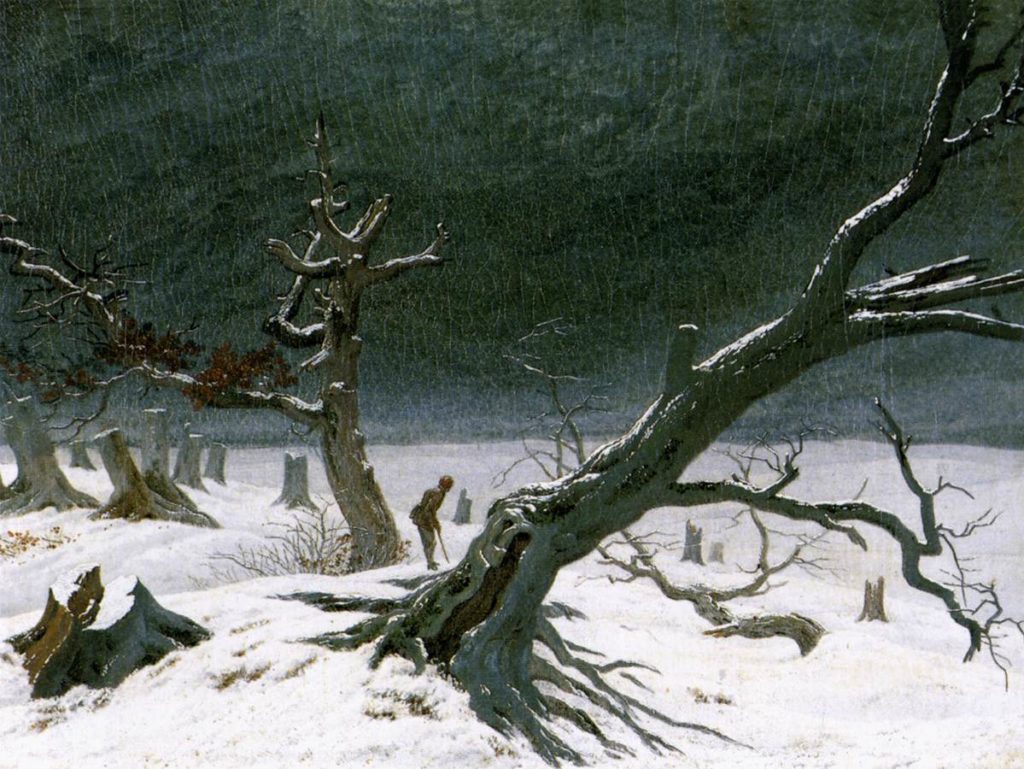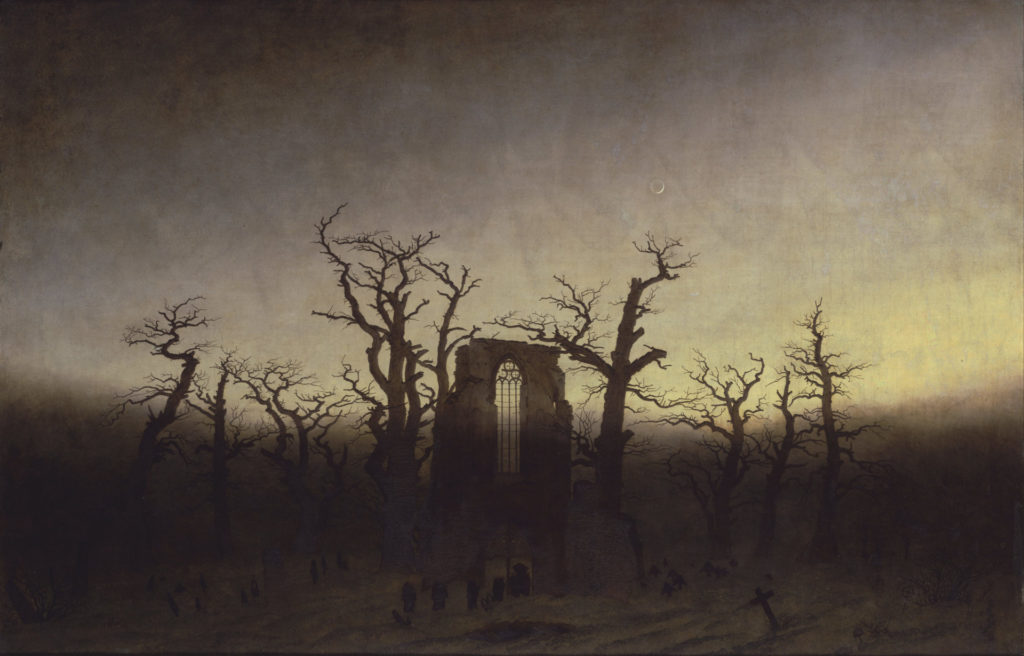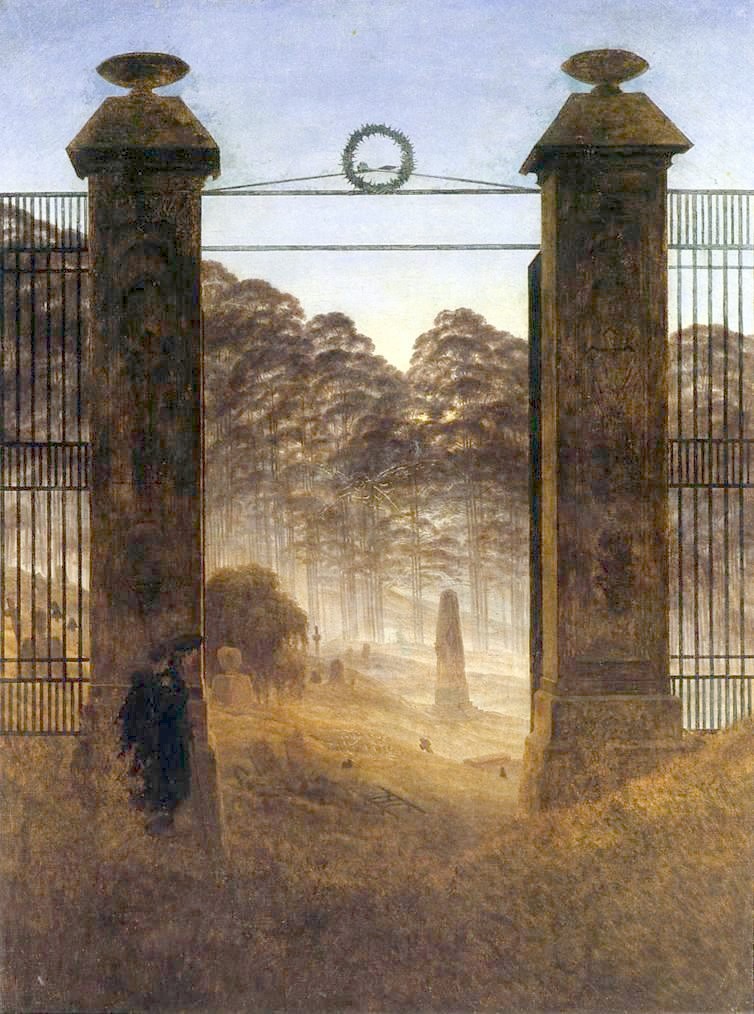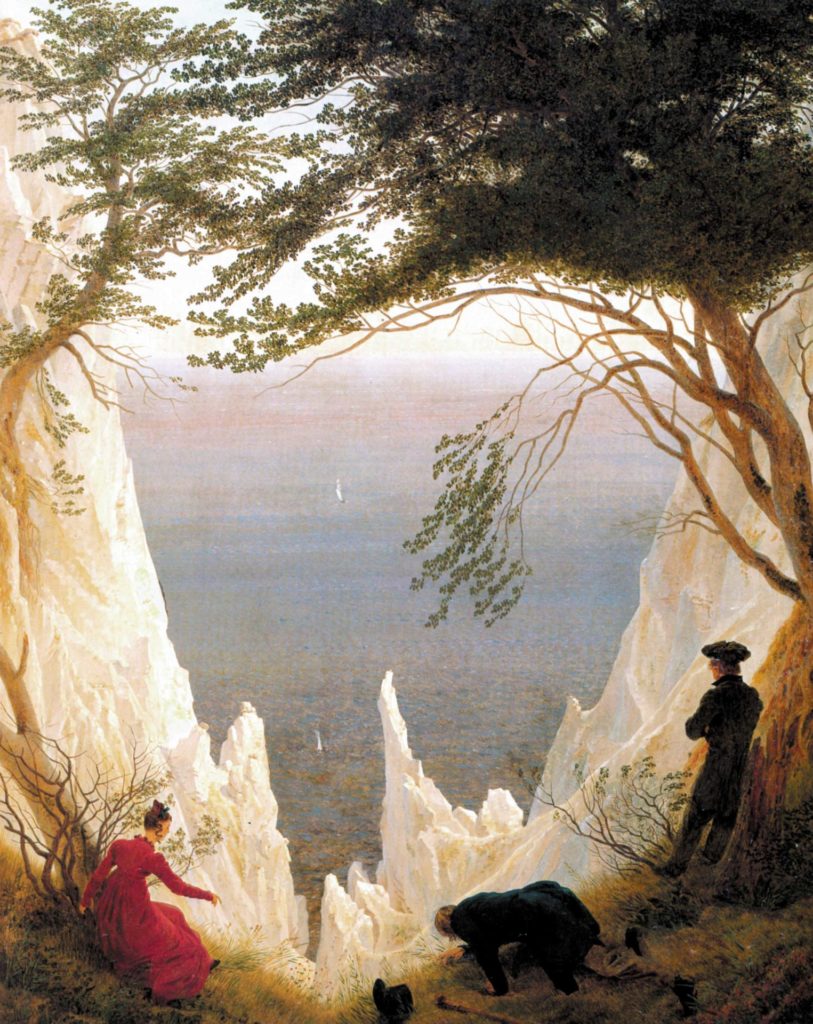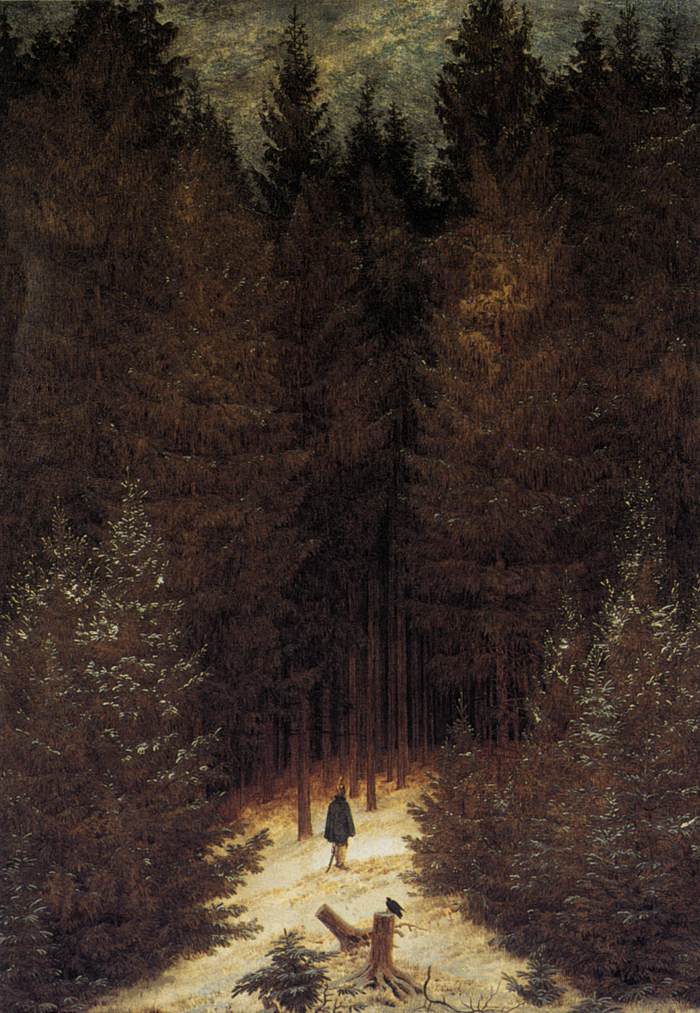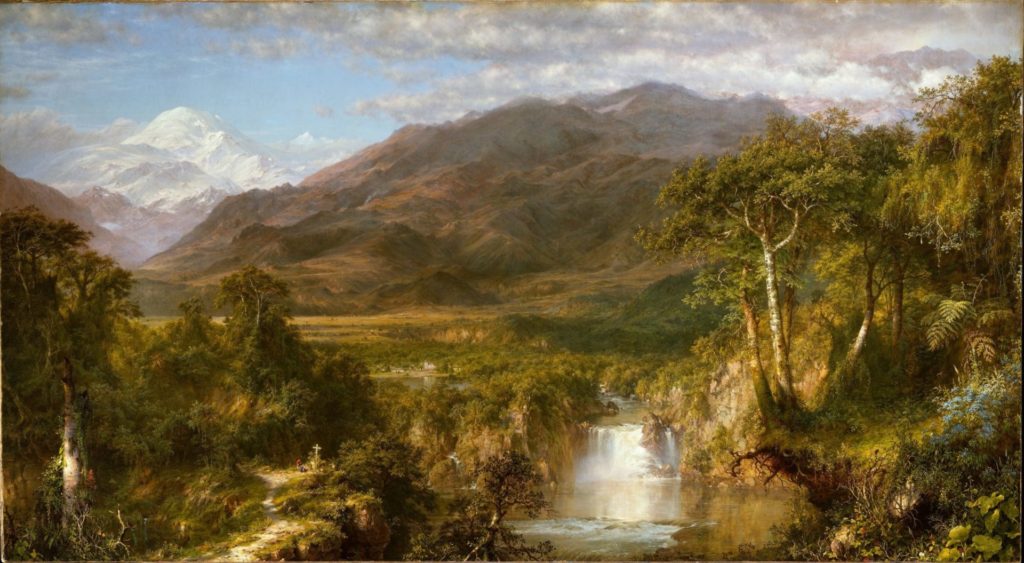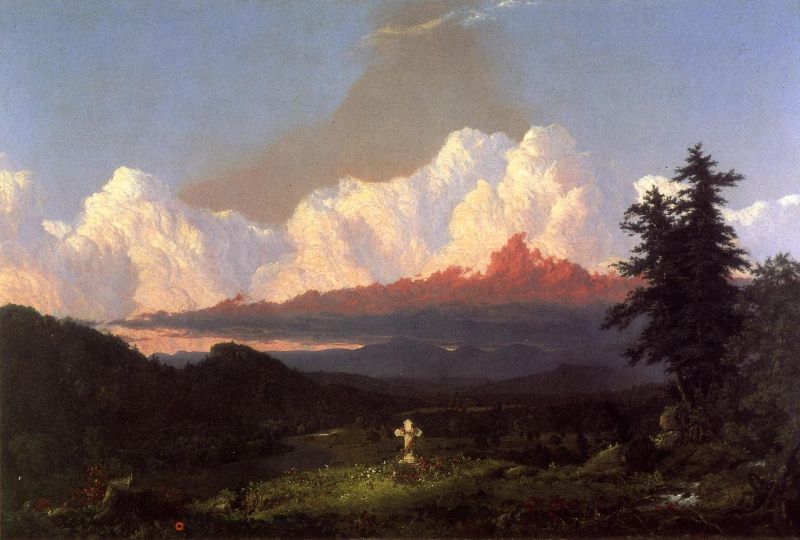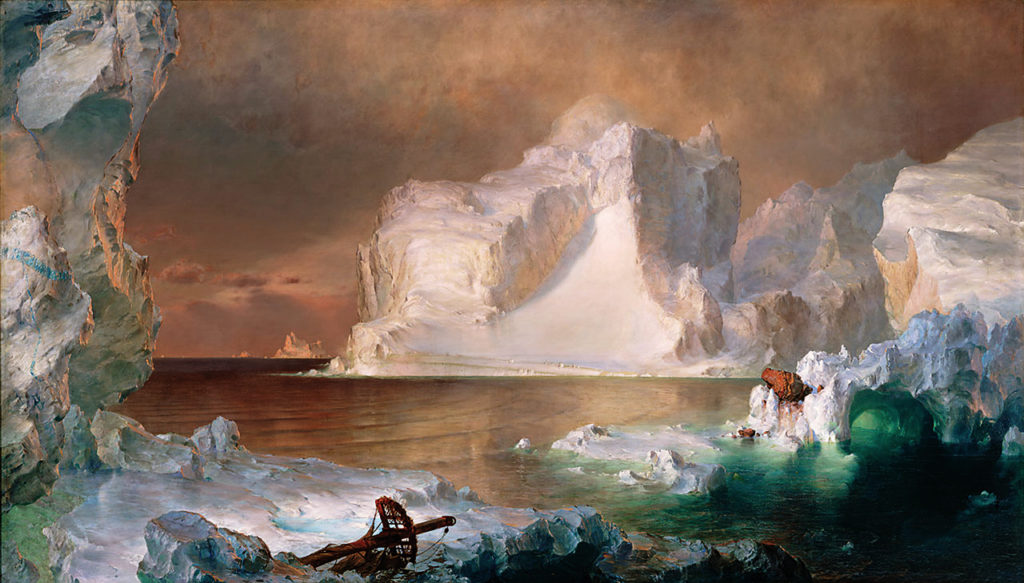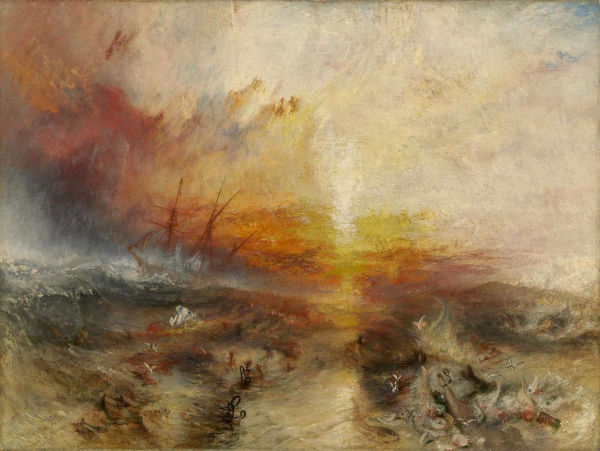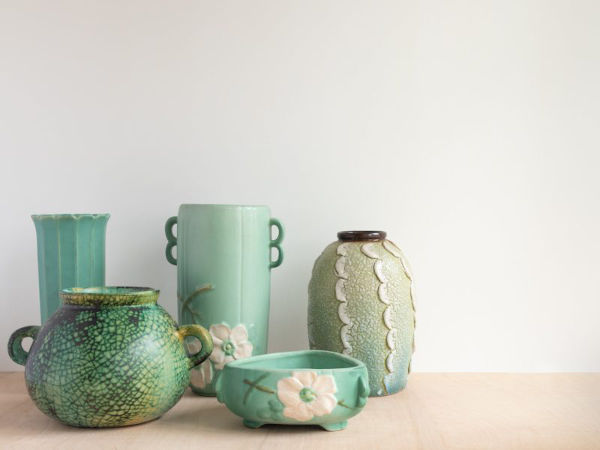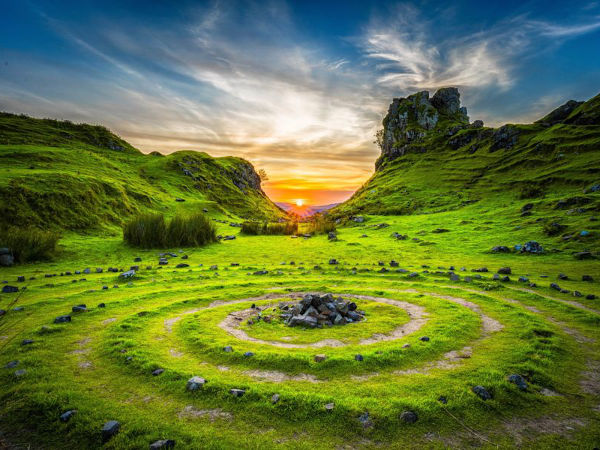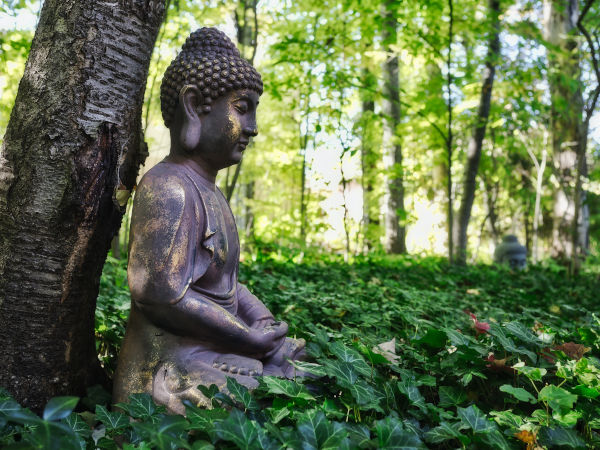In part 1 of this blog series about science, faith, and the representation of nature in Romanticism, I explored the Romantic idea of finding truth in divine nature through human creativity. Romantic artists transcended the representation of physical form by representing “ideal” forms in the ephemeral and intangible sublime. In this post, I will discuss the sublime in relation to the theories of Edmund Burke (1729-1797) and Immanuel Kant (1724-1804) and also show examples through the landscape paintings of the Northern European Romantics, the North America Hudson River School and the Luminists.
This is part 2 of a 4-part blog series that eventually got published as the article “The Romantic landscape: A Search for Material and Immaterial Truths through Scientific and Spiritual Representation of Nature” in the Athens Journal of Humanities and Art (2020). An older version of this post was originally published on an old blog from 2017.
Fear and repulsion to the powers of nature
Edmund Burke’s ([1757], 1998) theories of the beautiful and the sublime were based on the polar emotions of love and hate. His idea of the beautiful included classical features such as lightness, smoothness, balance, and harmony. On the other hand, his idea of the sublime was the opposite. The sublime was characterized by darkness, uncontrollability, and mystery.
For the Romantics, the beautiful and the sublime both came from a divine source, or in other words, they were seen as creations of God’s design. Fear and repulsion, characteristics of Burke’s sublime, are evoked when humanity is matched against divinity, expressed in the form of a dominating nature. Landscapes that represent nature’s relentlessness, such as shipwrecks in stormy seas and massive waterfalls portray this version of the sublime.
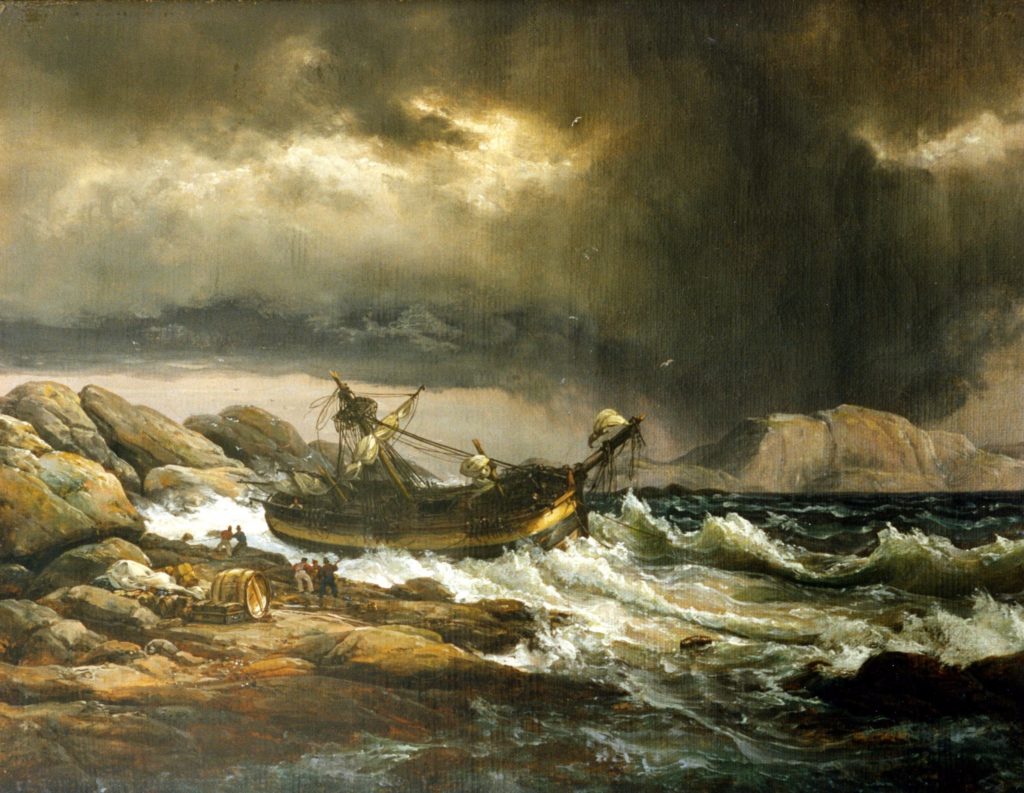
Celebration of human rationality over nature
As a response to Burke’s writings, Kant ([1790] 1952) focused on the ideas of the beautiful and the sublime as processes in the human mind. Instead of the fear of nature, his interpretation of the beautiful and the sublime celebrated humanity’s power of rationality over nature. The sublime, to Kant, was a complicated dynamic relationship between nature (i.e., the external reality and God) and humans. It entailed two possible characteristics:
Mathematical: An element’s immeasurability due to its greatness overwhelms our imaginations. Our judgment of its immeasurability and unimaginable size is what creates the feeling of sublime.
Dynamic: Our realization that there are physical limitations to what external nature can have over our internal self. We can reason over the fact that humanity’s inner nature does not need to submit to the powers of external nature.
In both cases of Kant’s interpretation of the sublime, rationality triumphs. Therefore, the Kantian sublime is a combination of pleasure, when reason surpasses nature, and displeasure, when imagination and physicality in turn becomes defeated by nature.
Caspar David Friedrich and the Northern European sublime
The sublime in Romantic paintings were generally more complex than the definitions created by Burke or Kant. Rather, these paintings portrayed abstracted notions of the tension between the powers of nature (and God) and the capacity of humans to comprehend and ponder over these powers. The Romantic artist who was most iconic of expressing this tension was German landscape painter Caspar David Friedrich (1774-1840).
Friedrich expressed the sublime in a way that showed the unresolved mystery between humanity and divine nature. His interpretation of nature was likely influenced by his German background since 19th century Germany was going through a nationalistic endeavor of medieval revival. German Romantics believed that there was a uniqueness to the German soul that was best expressed in literature and the arts, which lead to more mystical interpretations of the world (Vaughan 1978).
Friedrich placed human life in contrast to expansive nature, making his paintings “inhospitable, ancient, and timeless, and in them mankind looks almost like an alien creature” (Veen 2008, 11). His paintings portray the tension between mysterious nature and relatable mortality. He took traditional notions of ritual, pilgrimage, and church, and relocated them to ordinary encounters with nature. He personalized the experience of divinity in a secular world to a greater environment.
Koerner’s (2009) compares Friedrich and Schlegel’s Romantics’ aspirations: “If Schlegel desired that his writings be Bibles, Friedrich fashions the Romantic painter’s corollary aspiration: that his canvases be altars” (34). However, Friedrich was not considered an influential Romantic artist until the 20th century as he was reclusive and his paintings ignited religious controversy for relocating the divine from the church to landscapes.
But perhaps, it is because his paintings portray humanity’s vulnerability against nature so well that they relate to the modern soul, and therefore, brought about a renewed interest in his art today (van Os, 2008).
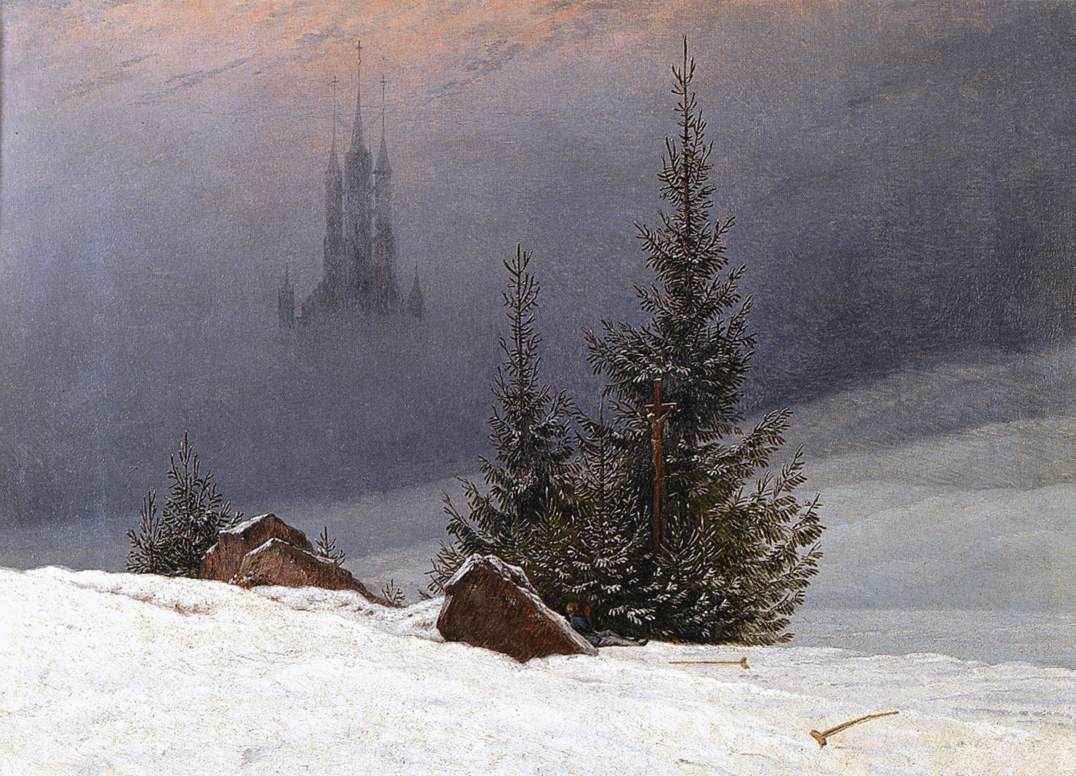
Contemporaries: Philipp Otto Runge and J.M.W. Turner
The other German Romantic painter who captured the mystical sublime of nature was Philipp Otto Runge (1777-1810). While Friedrich’s paintings show contemplation and structure, Runge’s paintings feel like an over-sharpening of a moment in time. His painted elements, including plants and children seem to contain a supernatural character. His paintings are evocative and fuse together naturalism and symbolism (Vaughan 1978).
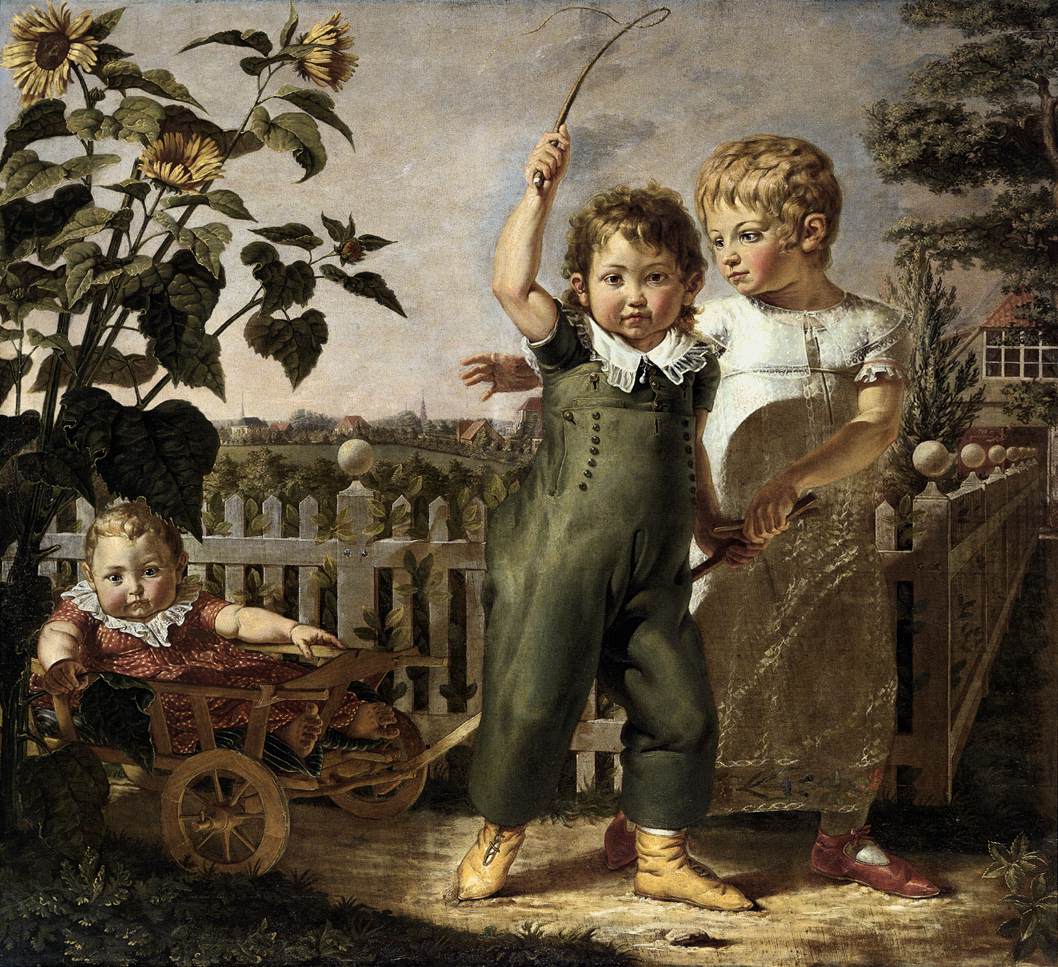
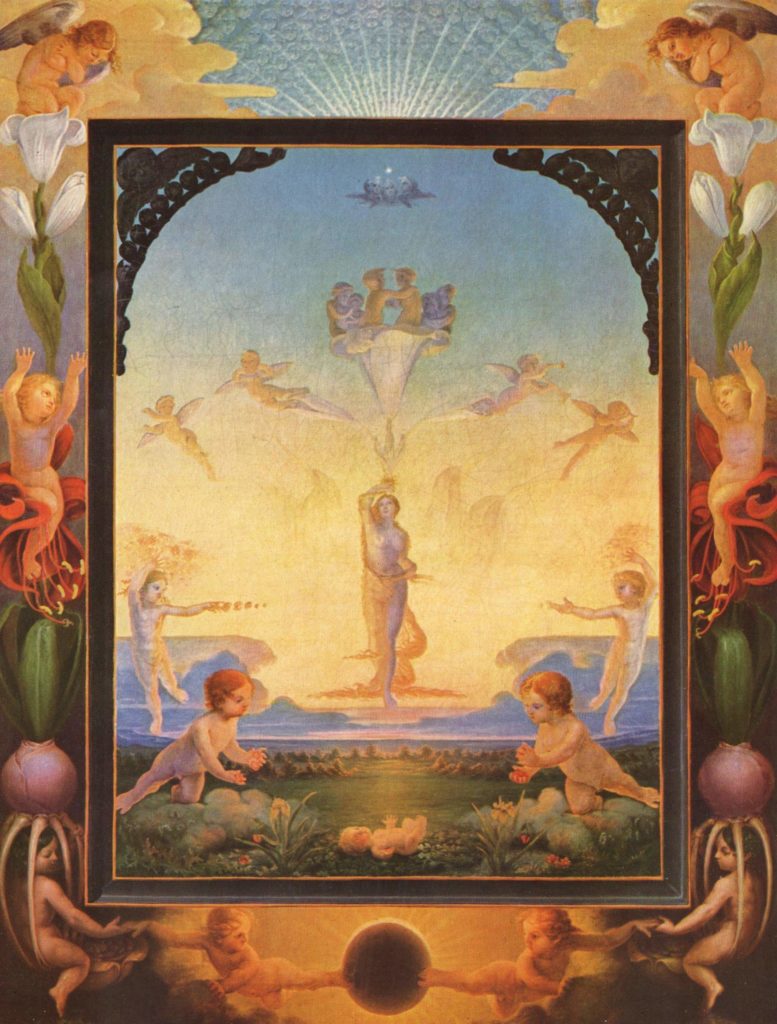
In comparison, English Romantics were more reserved. J.M.W. Turner (1775-1851) is perhaps the only comparable Romantic landscape painter to express the sublime like Friedrich and Runge. But despite Turner’s love of literally depicting the Romantic notion of “storm and stress,” his rash blending of strokes and the tendency for softer radiant tones displace the mysticism of the German sublime with a more Burkean overtone. The mystery of nature is unquestioned and accepted as an overwhelming physical power.
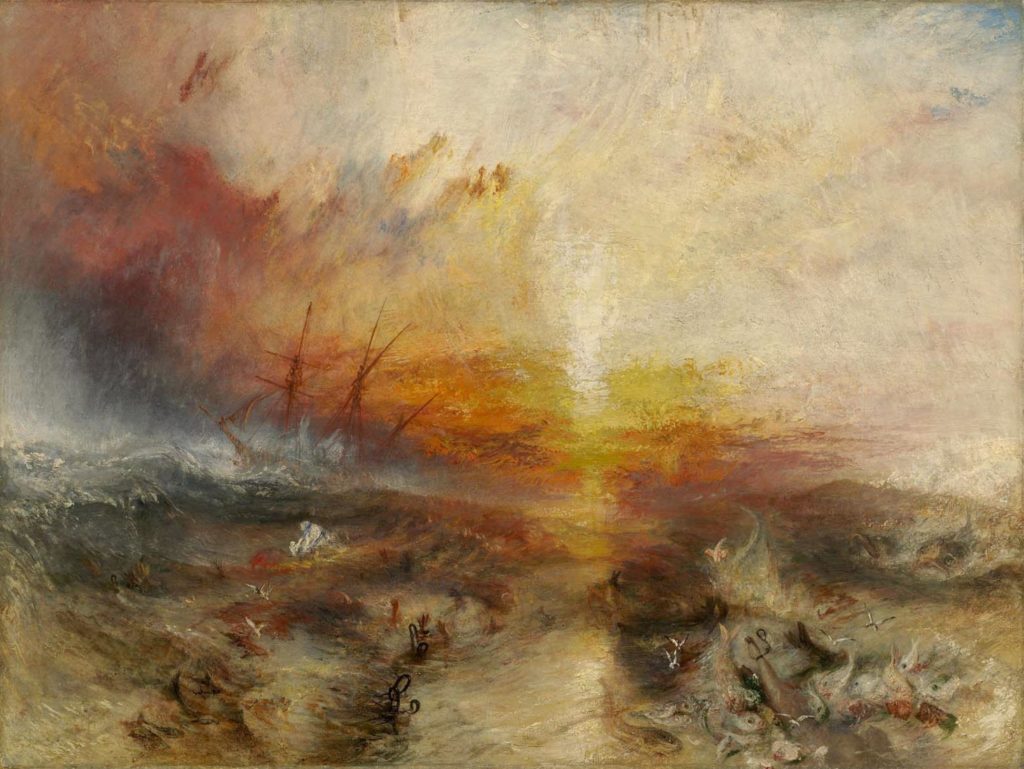
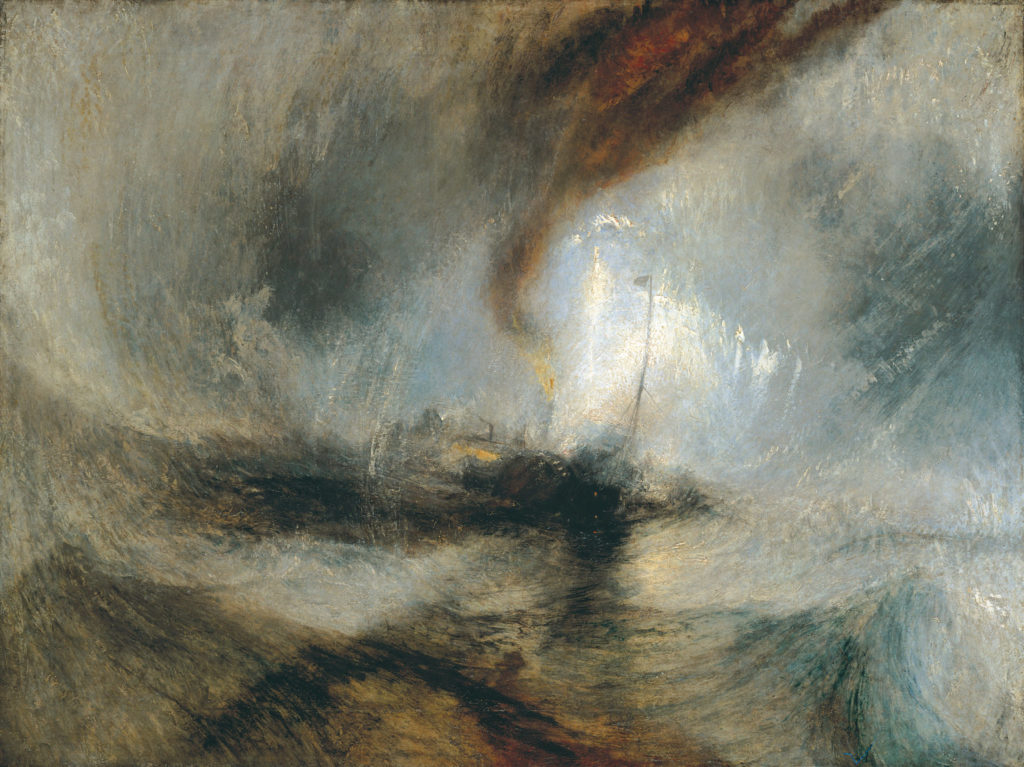
Hudson River School and Luminism: the North American sublime
Around the same time, North American painters in the Hudson River School were establishing their own definition of the sublime landscape. Nature, represented by these painters, was both serene and powerful, showcasing the midpoint between Burke’s ideas of the beautiful and the sublime. These paintings were also contemplative, alluding to Kant’s philosophy.
However, the most important theme in the paintings of the Hudson River School was a message from God: if nature is a creation of God and humans have the power of self-reasoning, then consequently, facing nature and God, humans have the moral responsibility for the good.
For the influential Puritan theologian Jonathan Edwards, nature was a “type” of Godly work. Calvinist Horace Bushnell expanded this idea by claiming that nature was a language of God that was expressed physically but could never be fully comprehended by the human mind. John Ruskin, whose writing was influential in later 19th century America, further emphasized this theological approach to nature in his strong Protestant aesthetics. So despite being influenced by European aesthetics, the Hudson River School was philosophically linked to the theological and political context of North America (Veith, 2001).
Works by the artists of the Hudson Rivers School ranged from religious allegory to evocative landscapes. Common themes included the portrayal of nature’s superiority and humanity’s moral responsibility. For example, Thomas Cole, a representative of the Hudson River School, rejected human-centeredness by using direct criticism in his allegorical paintings. Other artists portrayed similar opinions by diminishing human presence against a backdrop of an infinite and haunting nature.
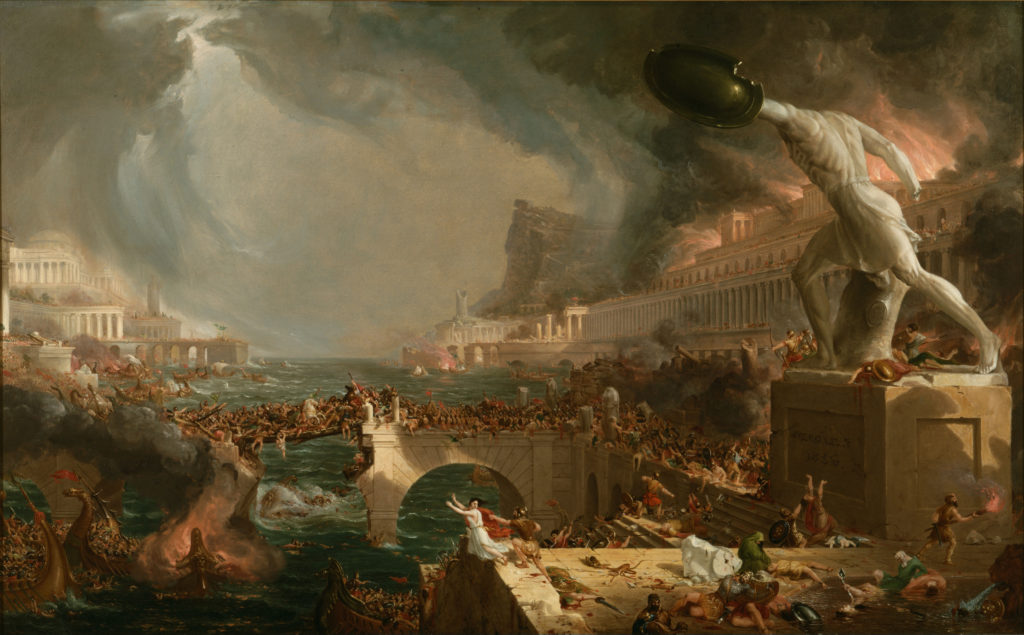
Light is symbolic of the Hudson River School sublime. Radiant light peeking through distant clouds at dawn or twilight represent the enigmatic yet authoritative future of God’s “savior”. Wide vistas represent both divine boundlessness and the celebrated American dream of freedom. The overall message delivered is that faith, worshiped through nature, is the ultimate morality.
When the Hudson River School started to decline due to shifting worldviews towards individualism and secularization in the latter half of the 19th century, the representation of light also changed. The distant heavenly light source changed into a unifying glow that emanated from the landscape itself. This shift in style, called Luminism, replaced the panentheistic faith of a more-than-material-God to pantheistic nature, and a sublime that is more immersive and participatory.
Nature and divinity, artist and viewer are united through the painted landscape:
The viewer, following the painter, enters the picture and follows its lead toward an illusionary, disembodied, spiritual oneness with divine infinity. Paradoxically, this ultrasubjectivity, this pouring of the subject into the object, is intended to lead to pure objectivity, a pure unity with nature (Halkes 2006, 51).
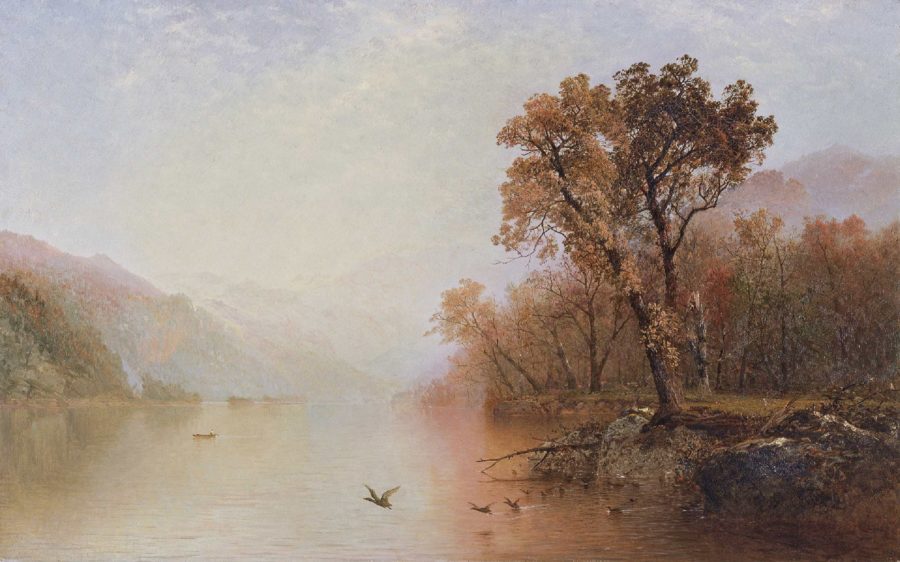
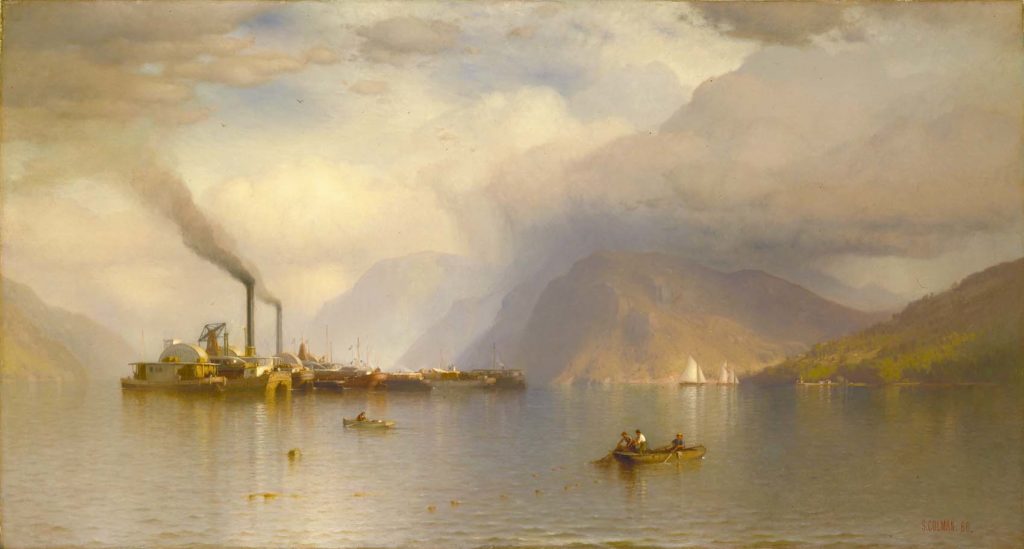
My fascination with landscapes aligns deeply with Halkes’ description of Luminism because my favourite painting is Lucius O’Brien’s Sunrise on the Saguenay, Cape Trinity (1880). I once thought the painting was an example of Romanticism, but after learning about Luminism, I understood the kind of divine nature O’Brien was illustrating.
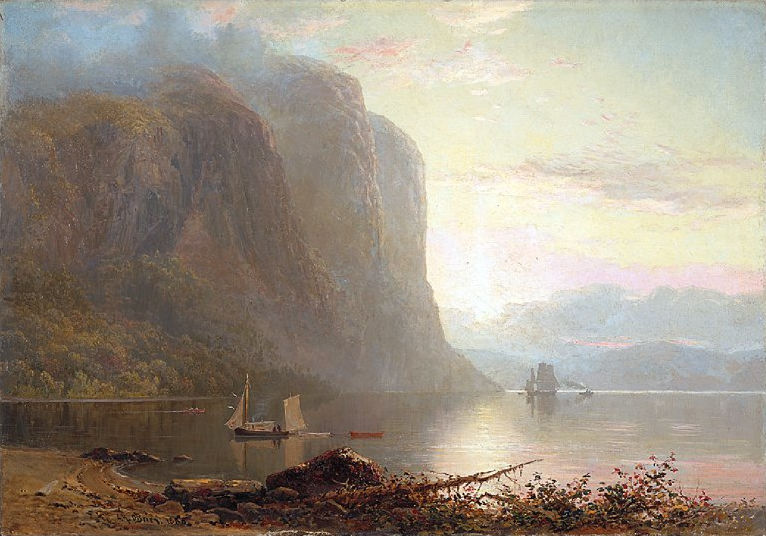
The painting is dear to me because of the memory I have of first seeing this painting (or rather a reproduction of the painting) in The Junior Encyclopedia of Canada (1990) when I was in elementary school. I remember being instantly mesmerized by the image. And in contrast to a rather dull childhood, this memory can be considered one of radiance.
This was my first experience of a “poignant landscape.” Somehow, the connection I developed with this painting led me into landscape architecture, into my PhD research, and into the eco-philosophy mindset I embrace today. In retrospect, this memory could be considered the first time I encountered “God.” As a disclaimer, I do not associate myself with any religion. So my God is neither religious nor anthropomorphic.
God, for me, is a panentheistic sacred power that supports me spiritually, most easily through landscapes. In this painting, through O’Brien’s depiction of immanent light, I am told by the power within the landscape that I unconditionally belong and that I can always be inspired if I choose to be.
Read about Romantic science at its relationship in Romantic art in part 3 of this blog series.
References:
Disclaimer: This list contains affiliate links, meaning I get a commission if you decide to purchase through my links, at no cost to you.
- Burke, Edmund. [1757], 1998. A Philosophical Enquiry into the Origin of Our Ideas of the Sublime and Beautiful, and Other Pre-Revolutionary Writings. Ed. by David Womersley. London: Penguin Books.
- G.W.Hegel, G.W.F. [1843], 2004. Introductory Lectures on Aesthetics. Ed. by M. J. Inwood, trans. by Bernard Bosanquet. London: Penguin Books.
- Halkes, Petra. 2006. Aspiring to the Landscape: On Painting and the Subject of Nature. Toronto: University of Toronto Press.
- Kant, Immanuel. [1790] 1952. The Critique of Judgement. Trans. by James Creed Meredith. Oxford: Clarendon Press.
- Koerner, Joseph Leo. 2009. Caspar David Friedrich and the Subject of Landscape, 2nd ed. London: Reaktion Books.
- van Os, Henk. 2008. “Casper David Friedrich and His Contemporaries,” in Caspar David Friedrich & the German Romantic Landscape. Aldershot, U.K: Lund Humphries.
- Vaughan, William. 1979. Romantic Art. New York: Oxford University Press.
- Veen, Ernst W. 2008. “A Dream Comes True,” in Caspar David Friedrich & the German Romantic Landscape. Aldershot, U.K: Lund Humphries.
- Veith, Gene Edward. 2001. Painters of Faith: The Spiritual Landscape in Nineteenth-Century America. Washington, DC: Regnery Pub.

